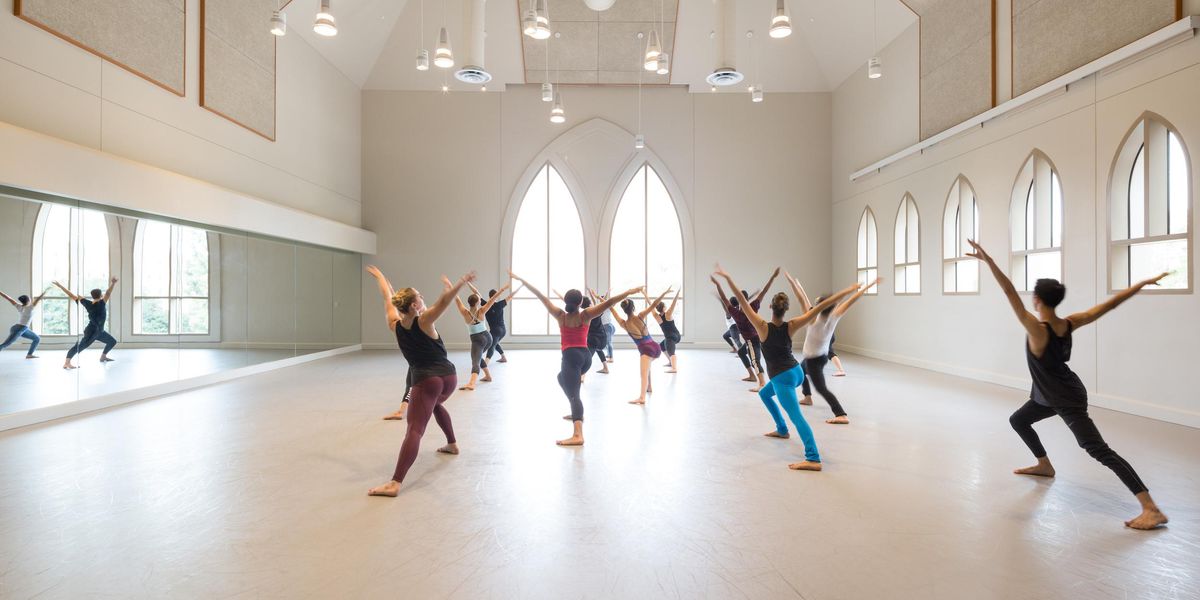Frederic Franklin (1914-2013)
By Sascha Radetsky
Franklin with Danilova in
Giselle. Photo by Constantine, DM Archives.
A clip from the 2005 documentary Ballets Russes shows Frederic Franklin, as the Sultan in the ballet Scheherazade, leaping from the top of a staircase onto the stage. Despite the distance of his fall, Freddie executes a landing the envy of any gymnast or feline, springs to his feet, and continues cavorting gleefully. He never skips a beat and betrays no fear, exuding only joy. It is essential Freddie, compressed into an eight-second clip of film. This one-of-a-kind vitality and sincerity rendered him a beloved presence in the ballet world well past his ninth decade of life.
Freddie helped carve out a place for dance in America, and for male dance in particular. I imagine him as a Johnny Appleseed of ballet, sowing its seeds wherever he ranged. Born in Liverpool, England, Freddie—like many of us—was the only boy in his ballet classes. As a teenager, he danced in London musicals and in Josephine Baker’s Paris cabaret. He eventually joined Leonide Massine’s Ballet Russe de Monte Carlo, where he forged an iconic stage partnership with Alexandra Danilova. As danseur noble with the company, Freddie performed over 45 leading roles, and worked with legendary choreographers such as Massine, George Balanchine, Michel Fokine, Bronislava Nijinska, Frederick Ashton, Ruth Page, and Agnes de Mille—who described her original Champion Roper (of Rodeo) as “strong as a mustang, as sudden, as direct, and as inexhaustible.”
When war erupted in Europe in 1939, Freddie and the Ballet Russe sailed for America. After navigating German naval mines for 14 days, their ship arrived in New York City, and that same evening the troupe performed to great ovations at the Metropolitan Opera House. In between New York seasons, they roamed the nation, presenting ballet to small-town crowds new to the art form. The company’s glamour and growing fame soon swept it west to Hollywood, where several Ballet Russe dancers, including Freddie, starred in feature films.
In addition to being a first-rate dancer and partner, Freddie was a ballet master, director, coach, choreographer, and artistic advisor. He and ballerina Mia Slavenska briefly formed the Slavenska-Franklin Ballet, a company that performed, among other repertoire, modern dancer Valerie Bettis’ well-received adaptation of Tennessee Williams’ “A Streetcar Named Desire.” Freddie co-directed The Washington Ballet and helped found the short-lived but critically acclaimed National Ballet in Washington. He assisted young companies like Cincinnati Ballet, Oakland Ballet, Tulsa Ballet, and Pittsburgh Ballet Theatre, staging ballets and shaping their repertoires. He staged several Giselles, including a version for Dance Theatre of Harlem set in New Orleans. He recreated Fokine ballets such as Scheherazade and Polovtsian Dances, works otherwise rarely seen outside of Russia. He also staged American Ballet Theatre’s current production of Coppélia.
Freddie sparkled with energy, and until the age of 95, he appeared in character roles with ABT and other companies, often drawing lengthy applause from audiences that recognized him as the biggest star on any stage. His many honors, including a 1985 Dance Magazine Award and the title of Commander of the Order of the British Empire, could not have come to a humbler artist.
Behind Freddie’s smiling blue eyes surged an expansive yet lucid memory. He witnessed the Great Depression, two world wars, the women’s and civil rights movements, the Space Race, and the Cold War. And even in this era of iPhones and intergalactic telescopes, he seemed able to recall everything. (He indulged in a nightly Gatorade-and-vodka, and we wondered if that tasty potion, when fused with the molecules of his organism, synthesized into the Fountain of Youth.)
Freddie was a rare artist and a bona-fide dance pioneer, but he was something still more impressive: a once-in-a-generation human being. He looked at life in a positive light, and could align others—at least momentarily—to this worldview with just a greeting, anecdote, or embrace. He could cheer a young dancer disappointed with a performance, compel the overly serious choreographer to smile, or elicit laughter from the most temperamental ballet star. Freddie’s warmth could thaw even the coolest substance.
Utterly devoted to William Ausman, his partner of 48 years, Freddie not only showed us how to dance and how to treat others; he showed us how to love, deeply. Although he has now taken the ultimate leap, his effect on those of us who knew him is indelible. In a way, this enlightened man fortified our faith in humanity, as one Freddie Franklin among us could balance out an army of inferiors. Yes, there is darkness in this world. Then again, our Freddie lived in it too.
Sascha Radetsky, a soloist at ABT, was a principal dancer with Dutch National Ballet from 2008 to 2010.
Franklin demonstrating the Bartender while staging Ruth Page’s
Frankie and Johnny for Cincinatti Ballet in 1980. Photo by Sandy Underwood, DM Archives.
See more photos of Franklin from the DM Archive at
www.dancemedia.com/v/8382
.
The biography
Frederic Franklin: A Biography of the Ballet Star by Leslie Norton, with Franklin, available at McFarland & Company or Amazon.com.




